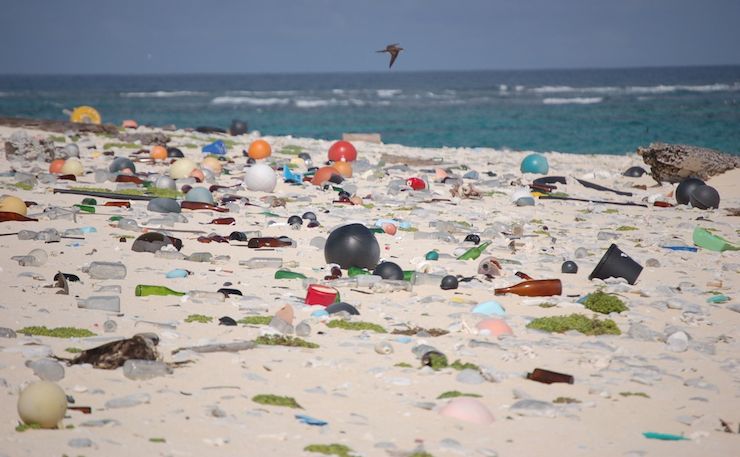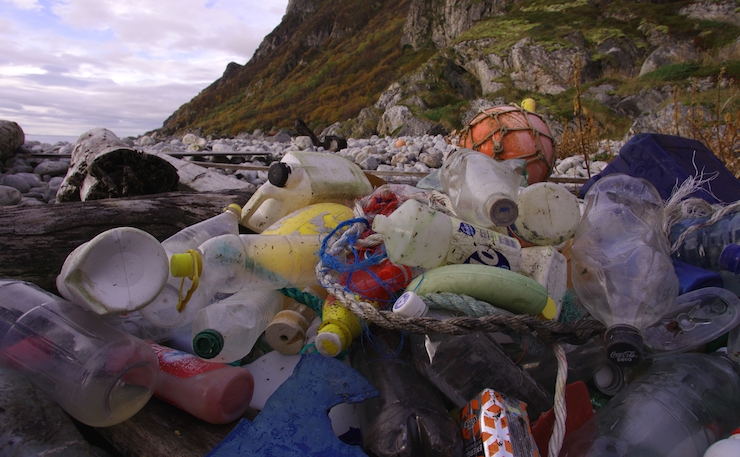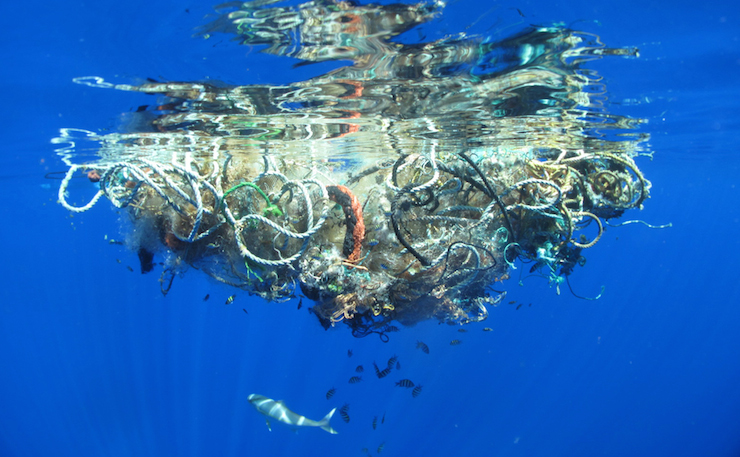Climate change may be the hallmark of the Anthropocene, an age where humans are effectively ecosystem-managers, but the growing ubiquity of plastic in natural ecosystems is its closely related cousin.
Like carbon emissions, plastics’ production boomed after 1950. In 1964, only 15 million tonnes were produced, but by 2014 that number had jumped to a staggering 311 million tonnes.
According to a Senate Report tabled yesterday, that figure is expected to quadruple again by the middle of this century, exacerbating the already alarming threat the report identified as a “toxic tide” of plastic which threatens the world’s oceans, animals, and potentially human health.
In a rare show of unity, all sides of politics came together to recommend the government “actively support research into the effects of marine plastic pollution,” and particularly so-called ‘micro-plastics’.
The Senate Inquiry into Marine Plastics also recommended that a national plastic pollution database be set up; a ban on the importation of personal care products containing micro-beads; and support for states and territories in phasing out plastic bags and developing targeted education campaigns.
The tri-partisan report further recommended the issue be placed on the COAG agenda for “urgent consideration,” and a working group of Environment Ministers be established to kickstart dialogue.
Once they find their way into the ocean, and an increasing number of gills and gullets, plastics take decades if not longer to break down. Already, there’s an alarming amount drifting in the oceans off Australia’s coast.

“The concerns with plastic in marine debris is its vast distribution in the water column, on the seabed and along coastal shorelines, as well as its persistence, and its characteristic of breaking down to smaller and smaller particles,” the Senate report said.
Alarmingly, the Senate Committee heard evidence that the 311 million tonnes of plastic produced in 2014 is likely to double to more than 600 million tonnes within twenty years.
The extent and impact of marine pollution from plastic is badly under-researched, but the Senate Committee formed the view that “current rates of pollution are sufficiently high as to warrant immediate action”.
It noted evidence that 640,000 tonnes of fishing gear is dumped in the oceans each year, and is thought to have killed 20,000 turtles in the Gulf of Carpentaria alone, but said the problem was more wide-reaching even than that.
“While the public perception of the effects of plastic in the oceans has been formed by images of turtles and other marine fauna entangled in fishing lines and plastic debris, the effects of marine plastic are more widespread, can be less visible, and many are only now being identifies,” the report said.
One of the key concerns is that plastics are breaking down and becoming invisible in the oceans, but may be affecting human health because the seafood we eat is often loaded with micro-plastics.
Some of the evidence submitted to the Inquiry suggested tiny bits of plastic humans are ingesting may carry high concentrations of toxic chemicals.
There’s no clear research on how serious this aspect of the problem is, but the chemicals themselves have been linked “to cancer, male and female reproductive issues, adrenal and thyroid disorder, neurodevelopmental issues in children, and disrupted immune function”.
There is no doubt, however, that animals are ingesting vast amounts.

According to the University of Queensland’s Dr Kathy Townsend, “Australia has been recognised as a hotspot for marine debris ingestion for both seabirds and sea turtles”.
A study by the CSIRO has found that, globally, 43 per cent of seabirds and 65 per cent of individuals within a species have plastic in their gut. Turtles have fared even worse. Dr Townsend canvassed research suggesting 50 per cent of the world’s turtles have ingested plastic.
Notwithstanding its apparent omniscience, the seriousness of the problem varies between species and locations.
One researcher based on Lord Howe Island, Ian Hutton, gave evidence of a seabird which had been found to contain 274 pieces of plastic, amounting to 14 per cent of its bodyweight.
“This is the equivalent of a human carrying a pillowcase of plastic in…[their]stomach,” he said. Hutton also testified to “emaciated birds” on Lord Howe Island, some with “wings half the length they should be”.
In another shocking example, Dr Heidi Auman presented evidence that “98 per cent of Laysan albatross chicks from Midway Atoll National Wildlife Refuge contained marine plastic debris in their stomachs, [and that]most of this could be measured in multiple handfuls”.
As production ramps up, these sorts of situations will become more common: it’s predicted that by mid-century 95 per cent of the world’s seabirds will have plastic in their gut. Recognising this, and the rapidly growing scale of the problem, the Senate report’s recommendations are remarkably far-reaching and hard-hitting.
Federal Environment Minister did threaten to ban micro-beads already earlier this year, if companies don’t phase them out by 2017. However given the milestone report’s recommendations, it’s clear a far more sweeping response is required from whoever wins government in July.
Donate To New Matilda
New Matilda is a small, independent media outlet. We survive through reader contributions, and never losing a lawsuit. If you got something from this article, giving something back helps us to continue speaking truth to power. Every little bit counts.





